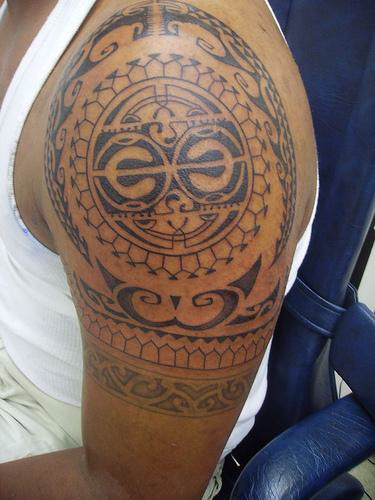




Tattooing was an important aspect of the Hawaiian culture, just like anywhere on the Polynesian islands. The Hawaiians even have tattoo gods and each time a member of the community gets a tattoo, prayers had to be done in the temple.
Hawaiian tribal tattoo art, known as Kakau, has been practiced for thousands of years and for a variety of purposes:
- Personal identification: unlike other Polynesian tattoo styles, Hawaiian tattoos are used for personal identification (instead of ceremonial purposes).
- Talisman: tattoos were believed to offer protection.
- As a symbol of mourning for a loved one.
- Adornment
The Hawaiian tribal tattoos were mostly black, the tattoo ink was made of a mixture of kukui nuts and sugarcane juice.
Getting a tattoo in a tribal community was not a very pleasant occasion, modern tattoo equipment was not part of tribal life. Instead they used sharp and pointy parts of animals, like bird beaks and claws, that were connected to a branch and hit with a mallet.






No comments:
Post a Comment